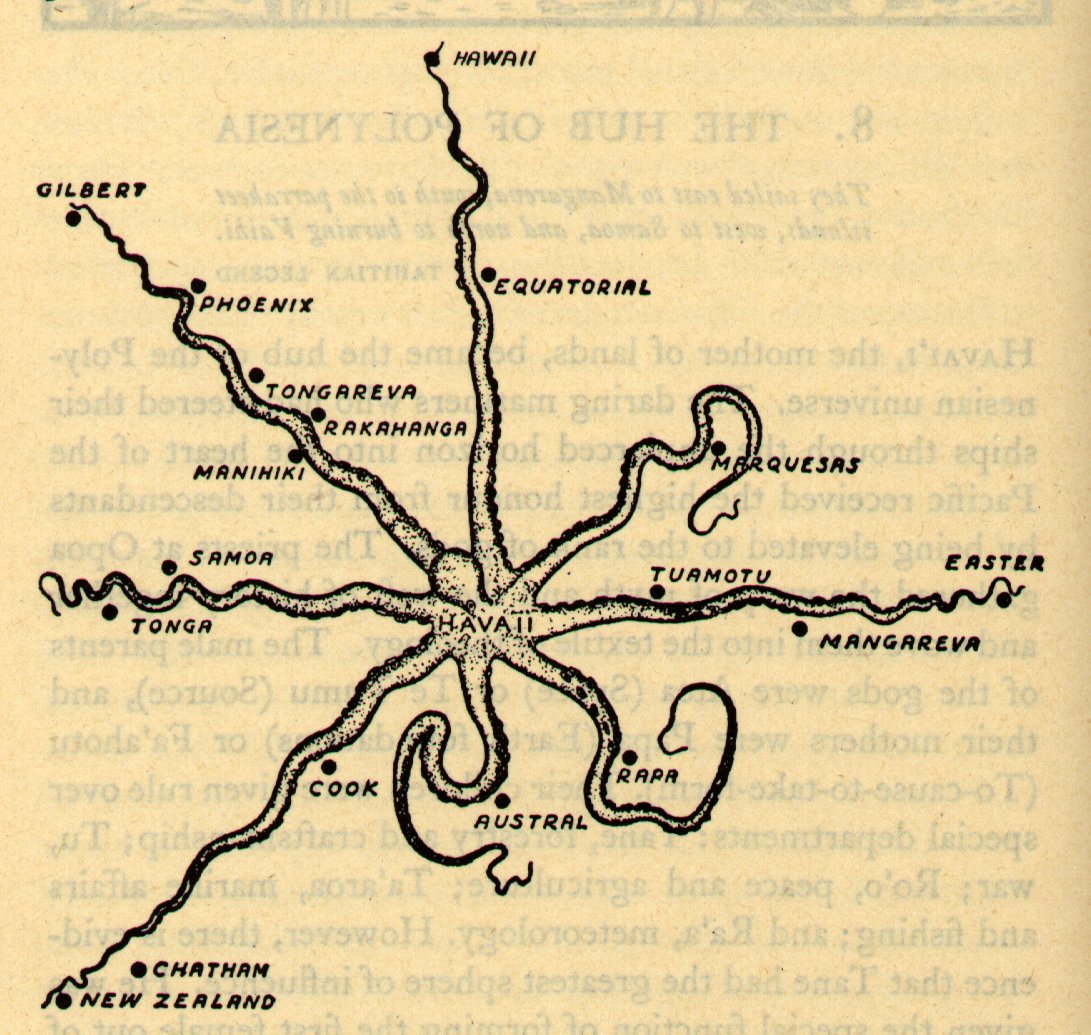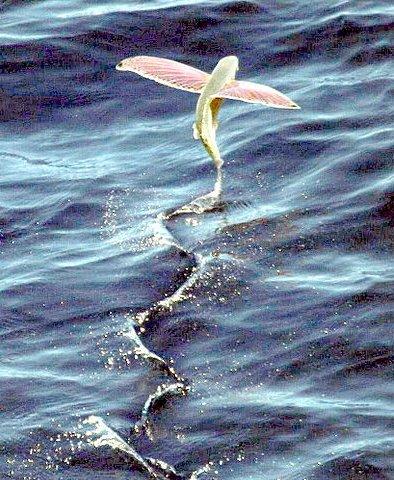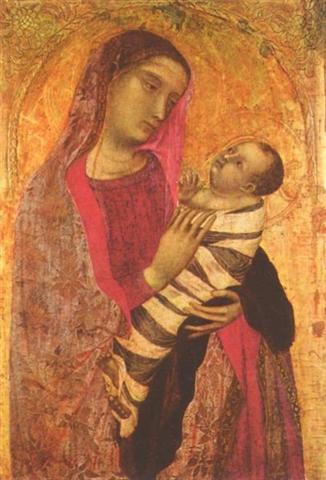7. To make the whole ocean move up and down, which the Moon accomplished, was a tremendous achievement, and when the Sun made daylight it was no less wonderful. And on the surface of the vast ocean the Polynesian islands were spread out far apart like the tips of the tentacles of a great Octopus (Heke):  8 * 59 = 472 alluded to the Octopus and to the Moon. In the center was his Head and from there 8 radii went out. 8 * 45 = 360. 59 + 45 = 104 and here was a key number for 'synchronizing' the Moon with the Sun. Here was 'the Rib of Adam' from which Eve was created:
There were fishes who attempted to fly high like birds (ika rere), and when the cycle of the Sun (1) had been completed at high summer in the north (when he had reached the tropic of Cancer) the long double-cycle (2) of the Moon was far from over. After high summer the journey had to follow the Flying Fish (an aspect of the Moon). ... ka hati toou ngao e oto uta e te ariki e / mo tau papa rangaranga o haho i te tai / mo tuu huehue rangaranga o haho i te tai / mo tau hahave rere ai ka pae / mo tae ngu rere ai ka pae / mo te ika aringa riva nei he aku renga ai ka pae ... Broken is your neck, oh Oto Uta, oh king! / Floating (?) like a raft (?) out at sea. / To be erected for the drifting huehue (fish) out at sea. / Able (?) to put an end to the flight of the flying fish hahave; / Able (?) to put and end to the flight of the flying fish ngu; / Put an end to this fish, a dorado, with the good face! (E:87-90) ...
... A flying fish is capable of both travelling under and above the surface and anciently such were believed to sleep on the beaches: ... The origin of the term Exocoetidae is as follows. The suffix -idae, common for indicating a family, has been placed after the root of the word exocoetus, not only the present scientific name for a genus of flying fish in this family, but also the general name in Latin for a flying fish. The Latin name is a transliteration of the Ancient Greek name εξώκοιτος for the flying fish, literally 'sleeping outside', from εξω 'outside' and κοιτος 'bed', 'resting place', so named since flying fishes were believed to leave the water to sleep on the shore ... Hevelius has illustrated the situation at the apex as a conjunction between the right back paw of the (male) Sun Lion and the left wing of Virgo:
Left was a characteristic of Woman because her little child liked to listen to the sound of her heart.
Where the cycle of the Sun ended the Moon took over the role of King: ... Atea then became the wife of Rua-tupua-nui, Source of Great Growth, and they became the parents of all the celestial beings, first the shooting stars, then the Moon and the Sun, next the comets, then the multitude of stars and constellations, and finally the bright and dark nebulae. When this tremendous task had been accomplished Atea took a third husband, Fa'a-hotu, Make Fruitful. Then occurred a curious event. Whether Atea had wearied of bringing forth offspring we are not told, but certain it is that Atea and her husband Fa'a-hotu exchanged sexes. Then the eyes of Atea glanced down at those of his wife Hotu and they begat Ru. It was this Ru who explored the whole earth and divided it into north, south, east, and west ...
|




